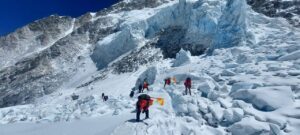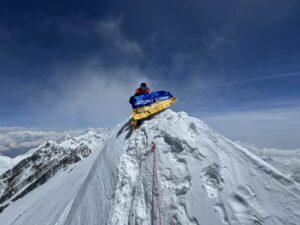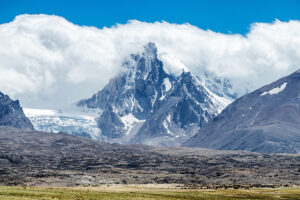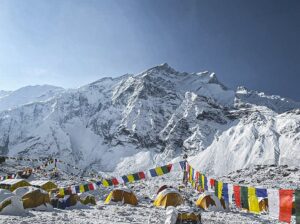If you’ve ever dreamed of trekking to K2 Base Camp but felt that it was too long or too rough, or even considered a full climb of Nanga Parbat, consider this: Pakistan has been reducing its prices since 2002 to overcome the negative effects of 9/11 and the subsequent safety issues in Pakistan, culminating in the terrorist murder of 11 people at Nanga Parbat Base Camp in 2003. Discounted prices and improved safety since then have made Pakistan an excellent alternative to Nepal. These discounts will only improve when the government seeks to lure back tourists post-COVID.
Here’s what you need to know to climb and trek in Pakistan, provided to ExplorersWeb by Karrar Haidri, Secretary of the Alpine Club of Pakistan.

The lower slopes of Nanga Parbat, in full flower two weeks ago. Photo: Attaullah, shared by Alex Txikon on FaceBook
First of all, bear in mind that in Pakistan, trekking permits go far beyond a mere hike. For US$50, plus another 50 bucks as a garbage deposit for those entering the Central Karakorum National Park, visitors can access not only the great treks of the Baltoro-Gondogoro and Hispar-Biafo, but all peaks up to 6,500m, of which there are many in the Karakorum and Pakistan’s Himalaya.
In Gilgit-Baltistan province, where the Karakorum peaks are located, the regional council requires no permit to open areas, while those in the restricted areas need a trekking permit and must pay to ascend higher than 6,500m. This fee varies with altitude and is based on a group of up to seven people:
K2 (8,611m). Group fee: $7,200. Each additional member beyond seven: $1,200
8,001m and 8,500m. Group fee: $5,400. Each additional member: $900
7,501m and 8,000m. Group fee: $2,400. Each additional member: $300
7,001m and 7,500m. Group fee: $1,500. Each additional member: $180
6,501m and 7,000m. Group fee: $900. Each additional member: $120
Although these fees are already low, further discounts are sometimes available:
10% off peaks located in Gilgit and Ghizer (except for the popular Spantik, also known as Golden Peak)
5% off all peaks during winter (December-February)
Finally, the waste management deposit for climbing peaks above 6,500m in Central Karakorum National Park is a mere $68 for each member.
Paperwork and Procedures:
All climbers and trekkers going to Gilgit-Baltistan must submit seven sets of documents to their local accredited tour operator four to six weeks before departure, to ensure that their project is approved in time. The paperwork includes:
o Application on the tour operator’s letterhead
o Application for a mountaineering expedition
o List of members on the expedition
o Route map of the proposed climb/trek
o Passport copies of all members
o Visa application for foreign visitors
o CVs of all expedition members
o Copy of tour company’s license
The tour operator then forwards the completed paperwork to the proper departments and waits for clearance. Once this is granted, the operator then applies for a climbing permit from the Gilgit-Baltistan Council Secretariat. This application includes some newer formalities:
o fee submission
o climbing permit application
o Proof of insurance for expedition members, in case rescue is necessary
o guide/liaison officer insurance and porter insurance
So one of the 300 credited tour operators in Pakistan processes all the required documents, after you submit the information. They handle the bureaucracy while you plan the climb.

Masherbrum, the original K1. Photo: Maria Ly








